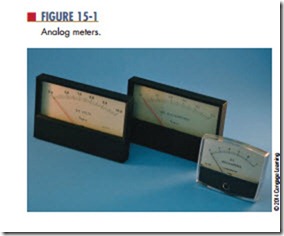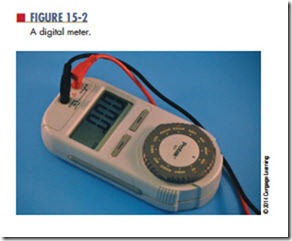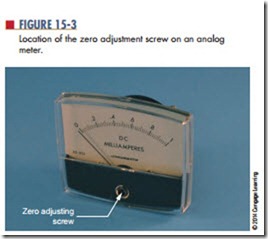This chapter describes the more commonly used analog meters, including the multimeter, or multi- function meter.
Introduction to Meters
Meters are the means by which the invisible action of electrons can be detected and measured. Meters are indispensable in examining the operation of a circuit. Two types of meters are available. One type is the analog meter, which uses a graduated scale with a pointer (Figure 15-1). The other type is the digital m e t e r , which provides a reading in numbers (Figure 15-2). Digital meters are easier to read and provide a more accurate reading than analog meters. However, analog meters provide a better graphic display of rapid changes in current or voltage.
Most meters are housed in a protective case. Terminals are provided for connecting the meter to the circuit. The polarity of the terminals must be observed
for proper connection. A red terminal is positive and a black terminal is negative.
Before using an analog meter, the pointer should be adjusted to 0. A small screw is located on the front of the meter to permit this adjustment (Figure 15-3). To zero the meter, place the meter in the position where it is to be used. If the needle does not point to 0, use a screwdriver to turn the screw until it does. The meter should not be connected to a circuit while this adjustment is being made.
Questions
1. What is the purpose of a meter?
2. What are the two types of meters available?
3. Which type of meter, analog or digital, would be easier to read?
4. What colors identify the positive and negative terminals of a meter?


